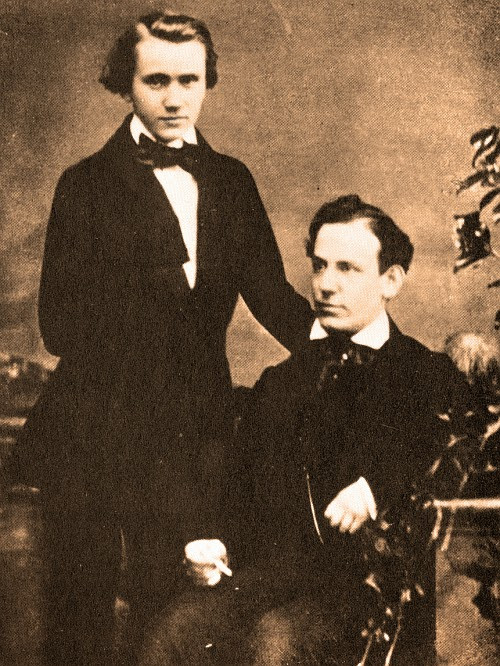Johannes Brahms’ Hungarian Dances stand as one of his most beloved and recognizable collections. This vibrant set of 21 dances draws deep inspiration from the rich tapestry of Hungarian folk music. This genre itself is a fascinating blend, reflecting the diverse auditory histories of Hungarians and Hungarian minorities across various regions including Poland, Czech Republic, Slovakia, Slovenia, Moravia, and Croatia, and other bordering nations. Initially conceived for piano, these captivating dances were later masterfully arranged for full orchestra by Brahms himself and other notable composers. You might find the melodies surprisingly familiar…
Hungarian Dance No. 5 performed by Hungarian Symphony Orchestra Budapest
[Video Placeholder – Would insert embedded video here if possible]
The Rhythms That Captivated 19th Century Europe

Brahms was not alone in finding profound musical inspiration in Hungary. A significant 19th-century musical movement, ignited by Franz Liszt’s groundbreaking 19 Hungarian Rhapsodies, saw numerous composers turning to these evocative sounds. Brahms’ own foray into this captivating realm of classical music was fueled by two key trends of the era. Firstly, piano compositions for four hands – requiring two musicians to perform side-by-side, their hands interweaving across the keyboard – were immensely popular. Secondly, there was a burgeoning demand within European taverns and salons for music that echoed the sounds of newly emigrated minority cultures, creating a vibrant and eclectic soundscape across the continent.
A Fortuitous Friendship Sparks Creativity

The most direct and impactful inspiration for Brahms’ Hungarian Dances stemmed from an earlier, chance encounter with the Hungarian violinist Ede Reményi. Interestingly, Reményi shared a teacher with Joseph Joachim, the very violinist for whom Brahms would later compose his renowned Double Concerto for Violin and Cello. Years after first witnessing Reményi’s captivating performances, a young, twenty-year-old Brahms became Reményi’s piano accompanist. This role placed Brahms directly within Reményi’s touring life, providing him with an invaluable, firsthand immersion into Hungarian musical heritage.
Fueled by this authentic engagement with Hungarian folk music, Brahms embarked on his own compositional journey within this style. Of the 21 dances he penned, Nos. 11, 14, and 16 are considered to be entirely original Brahms creations. Nevertheless, the entire set has become some of his most frequently performed and universally enjoyed works. Within his Hungarian Dances, Brahms masterfully captured the buoyant and spirited essence of the csárdás and verbunkos, traditional Hungarian folk dances. These dances are characterized by striking shifts in tempo, lively and engaging rhythms, and virtuosic, swirling melodic passages.
The term csárdás actually serves as an umbrella term for a diverse array of Hungarian folk dances. Each variation is rooted in distinct ethnic regions, exhibiting subtle regional nuances in name, structure, and performance style. Both men and women participate in csárdás dances, with women often wearing traditional, wide skirts that dramatically flare out into a distinctive shape as they twirl and spin—a visual element you can witness around the 3:18 mark in the video example above.
The verbunkos, the older of the two dance forms, traces its origins back to 18th-century Hungarian military traditions. The very name verbunkos is derived from the German word “werben,” meaning “to recruit.” In an effort to attract young men from towns and villages to join the military ranks, military units would organize grand festivities complete with food, drinks, and, crucially, dancing. Officers, led by their sergeant, would take center stage, showcasing a compelling display of stomping footwork, high kicks, spur-clicks, and heel slaps (highlights of which can be seen around the 1:22 mark in the provided video). Prospective recruits would gather, their numbers growing as the energy of the verbunkos intensified, often being drawn into the dance itself and effectively enlisted with a handshake amidst the fervor.

Almost 150 years later, Brahms’ Hungarian Dances retain the same vibrant energy they possessed in their initial performances in European taverns and grand salons. Encoded within their black and white musical notation lies a powerful homage to the sounds of Hungary’s rich and diverse history and its people. The music continues to rouse and excite audiences with its spirited, swinging melodies. Just remember to be mindful of whose hand you shake when the verbunkos rhythm takes hold!
Explore more about Some Memorable Hungarian Dances featuring Charlie Chaplin, Looney Tunes, and a humorous towel scene.
Hungarian Dances Nos. 5 and 6 are featured at the upcoming BRAHMS FEST on Saturday, February 1 at 8 PM and Sunday, February 2 at 4 PM at the Lesher Center for the Arts in Walnut Creek. Tickets are available from $44 / $20 for students (25 and under with valid Student I.D.) and can be purchased online or via the Lesher Center Box Office at 925.943.7469.

